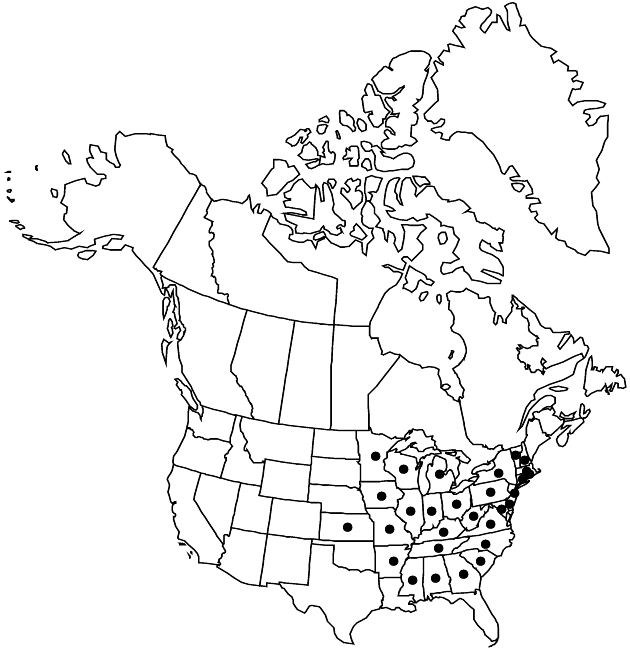Eupatorium sessilifolium
Sp. Pl. 2: 837. 1753.
Perennials, 50–100+ cm. Stems (from short caudices or rhizomes) single, sparsely branched distally, 5–10+ dm, glabrous or glabrate proximally, puberulent distally (among heads). Leaves usually opposite (distal sometimes alternate); simple, sessile; blades pinnately nerved, lanceolate to oblong, 70–150+ × 10–30 mm (lengths mostly 2–5 times widths), bases truncate to somewhat rounded, margins serrate, apices narrowly acute to acuminate, faces glabrate (scattered, fine hairs), glanddotted. Heads in corymbiform arrays. Phyllaries 10–15 in 2–3 series, elliptic to oblong, 2–5 × 0.5–1.5 mm, apices rounded to acute (not mucronate), abaxial faces villous to puberulent, glanddotted. Florets 5; corollas 3–3.5 mm. Cypselae 2–3 mm; pappi of 30–40 bristles 3–4 mm. 2n = 20, 30.
Phenology: Flowering Jul–Sep.
Habitat: Dry, open, edges of mesic woods
Elevation: 20–300+ m
Distribution

Ala., Ark., Conn., Del., Ga., Ill., Ind., Iowa, Kans., Ky., Md., Mass., Mich., Minn., Miss., Mo., N.H., N.J., N.Y., N.C., Ohio, Pa., R.I., S.C., Tenn., Vt., Va., W.Va., Wis.
Discussion
Selected References
None.
Lower Taxa
"fine" is not a number."dm" is not declared as a valid unit of measurement for this property.
